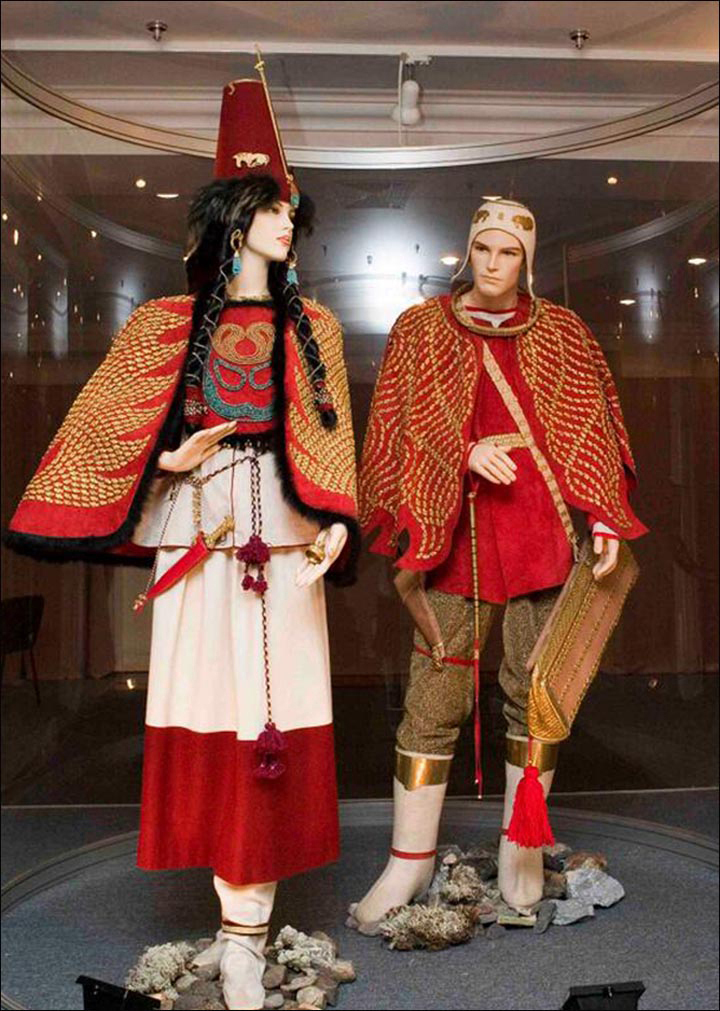1 posted on
01/19/2021 10:21:29 AM PST by
BenLurkin
To: SunkenCiv
Probably covered this already?
2 posted on
01/19/2021 10:22:21 AM PST by
BenLurkin
(The above is not a statement of fact. It is either opinion, or satire. Or both.)
To: BenLurkin
Why do these reconstructions never make them smiling?
Did they know that some day, joe biden would be president?
3 posted on
01/19/2021 10:24:51 AM PST by
tet68
( " We would not die in that man's company, that fears his fellowship to die with us...." Henry V.)
To: BenLurkin
In some ancient societies, if the King died, that meant his wife was buried with him, ready or not. I think some Viking cultures did this. Not sure about Siberia.
To: BenLurkin
Have they ever tested this facial reconstruction on people that we know have been photographed?
To: BenLurkin
Would this be Nimrod and Semiramis?
13 posted on
01/19/2021 10:45:47 AM PST by
Slyfox
(Not my circus, not my monkeys )
To: BenLurkin
These people are sexist!! King? Queen? Maybe the King thought himself as the Queen and the Queen thought herself as the King? Maybe the King was one of the other 56 genders..😀. We shouldn’t assume...😀
To: BenLurkin

Now for the first time the features of the powerful couple buried in their gold-encrusted, awe-inspiring clothing can be seen in life-like sculptures thanks to work of Moscow Ethnology and Anthropology and Novosibirsk Institute of Archeology and Ethnography. Pictures of the reconstructed skulls by Elizaveta Veselovskaya, Ravil Galeev. Picture of the reconstructed costume by Hermitage
22 posted on
01/19/2021 11:45:53 AM PST by
blam
To: BenLurkin
“Queen” looks like a Karen.
31 posted on
01/20/2021 7:48:10 AM PST by
Grimmy
(equivocation is but the first step along the road to capitulation)
To: BenLurkin
“Another theory suggests that the woman could have been the ‘King’s’ favourite concubine, sacrificed to accompany him to the afterlife along with 33 other people, including five children.
Fourteen stallions in full dress of gold, bronze and iron, and all taken from different herds were found inside the burial, too.”
This guy may have been more than a King. The huge treasure and all those sacrifices are extraordinary. The burial mound is 80 meters wide.
33 posted on
01/20/2021 7:56:47 AM PST by
Varda
To: BenLurkin
Those are their “don’t harsh my buzz” faces.
In 440 B.C., Herodotus, an ancient Greek writer popularly dubbed the “father of history,” included an account of ritualistic cannabis use in Book IV of his acclaimed Histories. Recounting the funeral ceremonies of a nomadic Eurasian civilization, the historian reports, “The Scythians, as I said, take some of this hemp-seed, and … throw it upon the red hot stones.” When the hemp began to smoke and release a vapor, the “Scyths, delighted, shout[ed] for joy.”
Herodotus’ writings represent the earliest textual evidence of cannabis’ use as a mind-altering substance. Scientists have long lacked the physical evidence needed to verify his claims, but a new study published in the journal Science Advances is poised to set the record straight once and for all: As researchers from China and Germany report, wooden bowls, or braziers, excavated from a 2,500-year-old cemetery nestled in the mountains of western China bear significant traces of THC, the compound responsible for cannabis’ psychoactive effects.
https://www.smithsonianmag.com/smart-news/2500-year-old-chinese-cemetery-offers-earliest-physical-evidence-cannabis-smoking-180972410/
37 posted on
01/20/2021 2:05:09 PM PST by
seowulf
FreeRepublic.com is powered by software copyright 2000-2008 John Robinson
